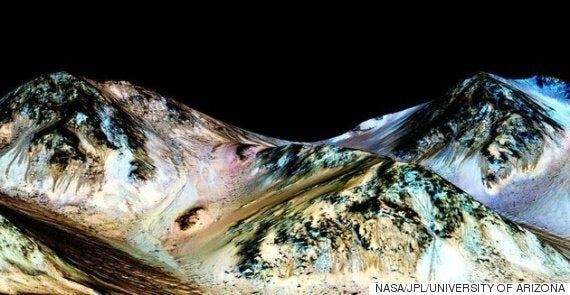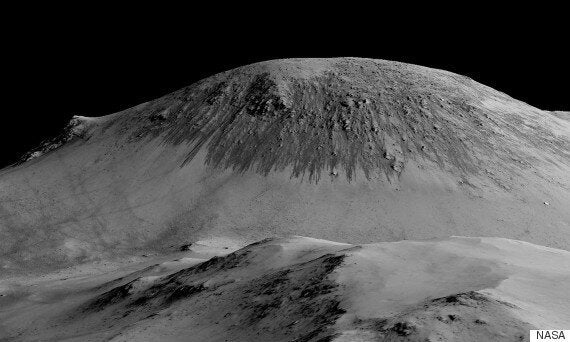NASA has confirmed that not only is there water on the surface of Mars, but that they have evidence of it appearing in liquid form.

The organisation announced on Monday the results of a new study which show that liquid water can be seen flowing down the sides of crater walls, mountains and canyons.
Published in Nature Geoscience the study, lead authored by Lujendra Ojha of the School of Earth and Atmospheric Sciences at the Georgia Institute of Technology, focuses on a mysterious phenomenon called recurring slope lineae or RSL which can appear in the form of dark streaky lines canvassing the Martian surface.

The RSL lines were spotted during the examination of images taken by the Mars Reconnaissance Orbiter spacecraft.
Stretching up to 15ft in diameter, these lines appear during the Summer months on Mars and show what the researchers believe to be a salty brine trickling down on the surface.
These lines then start to disappear as Autumn sets in and the temperatures drop. Then, when the temperature increases again the following year the lines start to reappear.
What scientists are unsure of however is where the salty water is originating from.
We know that in the past Mars had a giant ocean covering much of the planet's surface.
Using this as a starting point researchers believe it could be rising up from underneath the planet's surface while others believe it could have originated from the planet's polar ice caps.
Seth Shostak, senior astronomer and director of the Center for SETI Research has analysed the images as evidence of a vast underground reservoir saying: "These soggy streaks suggest that there are vast reserves of underground water, presumably the last remains of lakes that may have once dotted the landscapes of this planet,"
"Consequently, if life began billions of years ago during Mars' more clement youth, its progeny could still be hiding out a few feet underfoot," he said.
SEE ALSO:
The question of life on Mars is one that has been circling for years now with liquid water remaining as one of the top requirements by scientists for it to exist.
Ojha's paper will now clearly fuel a newly renewed effort to find life on the planet however the researchers are keen to point out that there is a risk the water volume in the salty brine "may be too low to support known terrestrial life."
Of course this is just focusing on one possible form of water, one that we know is joined by the existence of frozen water on the planet's poles.